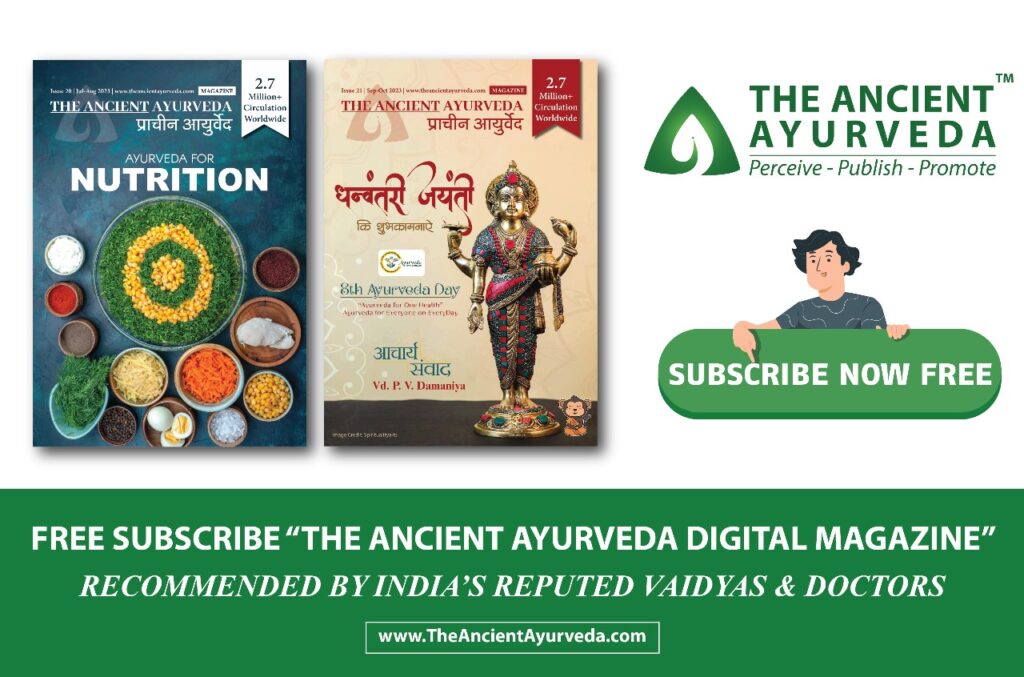Nowadays, lifestyle disorders are emerging rapidly worldwide. The prevalence of such diseases are increasing in children also. Diabetes is one of the most challenging and emerging disease entities in children as it needs a total routine management along with strict medical care to have a good life. “Ayurveda – A science of life” has also described such diseases in children with some special emphasis. A specialty in Ayurveda called as Kaumarbhritya deals with such conditions.
Diabetes is classified in three main types as (a) Type 1 Diabetes, (b) Type 2 Diabetes and (c) Gestational Diabetes. This classification is based on the etiology it forms; either when the pancreas does not produce enough insulin or when the body cannot effectively use the insulin it produces. Insulin is a hormone that regulates glucose metabolism and level of blood sugar. Juvenile diabetes (Type 1 DM/T1DM) is the most common endocrine-metabolic disorder of childhood and adolescence period because of autoimmune response in which the body’s defense system attacks the insulin-producing beta cells in the pancreas. As a result, the body can no longer produce the insulin it needs, and the subsequent lack of insulin leads to increased blood and urine glucose. The disease can affect people of any age, but onset usually occurs in children or young adults.
The exact correlation or the disease synonym as per the presentation of Juvenile Diabetes is not available in any of the Ayurveda classical texts. The given characteristic features of Prameha in Ayurveda texts show marked similarity with the syndrome of Diabetes mellitus. Prameha is a broadspectrum disease entity; under which many dreadful conditions like diabetes, metabolic syndrome, urinary dysfunctions etc. can be considered. The detailed description on Prameha like definition, classification, causes, signs & symptoms, pathogenesis, diagnosis, prognosis, management, complications etc. suggests that the ancient Acharyas have in depth knowledge of the disease. All the Acharyas in their description about the disease had emphasized more on the Apathyanimittaja type of Prameha which has many similarities with today’s Type 2 Diabetes Mellitus and occurs mainly in adults. But very few references are available regarding Jataja (congenital)or Sahaja type of Prameha which have much similarity with Type 1 Diabetes Mellitus (Juvenile Diabetes/ T1DM) which is a more prevalent form of diabetes in children.
‘Kaumarbhritya’, the branch of Ayurveda dealing with mother and child (obstetrics, gynecology, neonatology, and present pediatrics) has been considered as a distinct specialty demanding more expertise and quality care. Antenatal care is also given much concern. Area of this subject includes prevention as well as treatment of the disease of children. Keeping all this in mind Jataja or Sahaja type of Prameha can be correlated and an effort has been made to find out its correspondence with the disease entity Juvenile Diabetes.
Description of two types of Prameha from management point of view strikingly is the same “Krisha Pramehi” (Lean Diabetic) and “Sthula pramehi” (Obese Diabetic) are classified in Ayurveda on very similar grounds as Diabetics are classified in IDDM and NIDDM respectively. On the very similar pattern we find the classification as Sahaj pramehi (Congenital) and Apathaya nimmitaj (Due to overeating and wrong eating habits). These two types of classification described by Acharya Sushruta is more relevant while reviewing on Prameha in children. The symptoms which mark Sahaja Prameha, are emaciation (Krisha), dryness of the body (Ruksha), diminished capacity of eating (Alpashi), too much thirst (Pipasabhrusham) and of wandering habits (Parisaransheel). As stated by Acharya Charaka and Acharya Sushruta all types of Prameha are Tridoshaja in origin, but still it can be said that Jataja Prameha in context of Juvenile Diabetes come under the Apatarpanjanya, Anilatmaka (Vatapradhana Tridoshaja) and Dhatuapakarsanjanya type of Prameha. On the basis of Body constitution, it is very clearly defined by Acharya Sushruta that Sahaja Pramehi is generally Krisha (thin).
Ayurvedic Treatment Modality
According to Ayurveda the line of treatment of prameha is strictly on individuals’ constitution. Following criteria should be kept in mind while constructing a management for diabetes in children.
- The prakriti of the patient
- Dosha predominance of disease
- Dooshya vitiation
- Obstruction in srotus
- Manasika Prakriti
- Ahara & Vihara
- Hereditary factors etc…
As explained previously, the patients of Sahaja Prameha are generally with Krisha Sharira (lean/asthenic). So Acharyas have given the treatment modalities according to the body constitution. Krisha Pramehi is the state of Vata dominance and severe Agni Dushti leading to improper nourishment of tissue thus, making a person weak. Krisha Pramehi has to be managed by Laghu-Santarpanotha Ahara, which will improve the patient’s condition.
According to Acharya Sushruta the treatment modality for the Krisha Pramehi should be based on the line of increasing stamina and vitality by way of tonics (brumhana) diet, drugs etc., and the patient should never be given excessive Langhana or Apatarpana i.e. he should not be starved. So, keeping all this in mind the treatment modality for children with diabetes should be Pramehahara (Anti-diabetic), Rasayana (Rejuvenating, antioxidants, anti-ageing) and Ojovardhaka (improves the health, vitality, and enthusiasm). In general Type 1 Diabetes Mellitus {Vathaja prameha}, patients are advised to have Bhrimhana medication & diet which increases dhathus in the body. So, Children with Diabetes need a strict diet regimen, a healthy daily lifestyle and a keen medical supervision with palliative care for their better sugar control with healthy statement. Such drugs like Rasayan choorna, Dhatri-Nisha Choorna, Dhanvantar Ghrita, Mahadadimadi Ghrita, Ashvagandha ghrita with proper dose can be useful for oral administration for the children with Diabetes.

